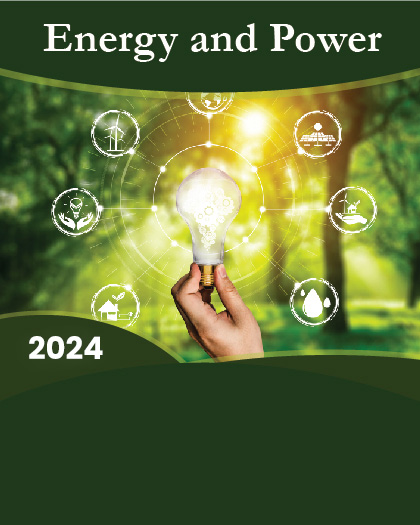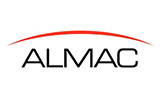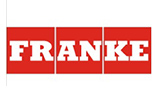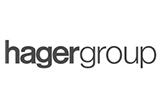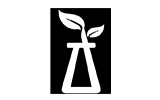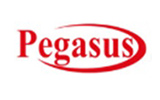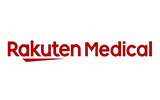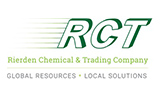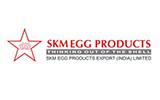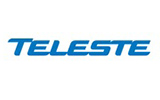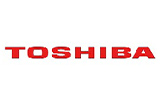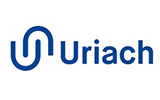
Report Overview
Growing awareness about environmental pollution and the thriving oil and gas sector are expected to drive Saudi Arabia Gas Sensors Market during the forecast period between 2025 and 2033.
Saudi Arabia Gas Sensors Market - Industry Size, Trends & Forecast Report, 2033
Saudi Arabia Gas Sensors Market size was estimated at USD 24.6 million in 2024. During the forecast period between 2025 and 2033, Saudi Arabia Gas Sensors Market size is projected to grow at a CAGR of 10.5% reaching a value of USD 48.9 million by 2033. Prominent drivers of the market include the rising adoption of gas sensors across industries, such as oil & gas, petrochemicals, chemicals, and manufacturing, fueled by increasing industrial automation. These sensors are critical for workplace safety, detecting hazardous gases to mitigate risks and environmental damage. Stringent regulatory frameworks and growing environmental concerns are prompting businesses to deploy advanced gas monitoring systems. Additionally, technological advancements and IoT integration are enhancing real-time data collection and analysis, further accelerating market growth. Riyadh and the Eastern Province, including Dammam and Jubail, are key regional markets due to their extensive industrial infrastructure and concentration of oil refineries and petrochemical complexes. Riyadh?s smart city initiatives and rapid urbanization also contribute to market expansion. Moreover, Saudi Arabia's regulatory authorities, such as the General Authority for Meteorology and Environmental Protection (GAMEP), have implemented stringent air quality and safety regulations, driving the demand for high-precision gas detection systems in industrial facilities.
Saudi Arabia Gas Sensors Market
Gas Sensors - Overview
Gas sensors detect the presence and concentration of specific gases, converting chemical interactions into measurable electrical signals. These signals trigger alarms, provide readings, or activate control systems. Crucial for safety, environmental monitoring, industrial processes, medical applications, and automotive uses, they detect leaks, assess air quality, monitor manufacturing gas levels, analyze breath/blood gases, and control emissions. Various types exist, including electrochemical sensors for toxic gases, semiconductor sensors for flammable gases, catalytic sensors for combustible gases, and infrared sensors for gases like carbon dioxide. Sensor selection depends on the target gas, sensitivity, accuracy, environment, and application.
Saudi Arabia Gas Sensors Market
Growth Drivers
Growing Awareness about Environmental Pollution
Growing concerns over environmental pollution in Saudi Arabia, coupled with stringent regulatory measures, are driving the demand for gas sensors. With rapid urbanization and industrial expansion contributing to worsening air quality, there is an increasing need for advanced monitoring solutions. Gas sensors are essential in detecting and measuring harmful emissions, including greenhouse gases, which play a significant role in climate change. In alignment with Vision 2030, Saudi Arabia has introduced strict environmental policies, such as the National Environmental Strategy launched in 2021, which aims to reduce greenhouse gas emissions by 278 million tons by 2030. Additionally, more than 200 industrial facilities are mandated to implement emission monitoring technologies by 2025. Cities like Riyadh have experienced rising particulate matter (PM10) levels, averaging 73 ?g/m? in 2022-surpassing the World Health Organization?s safe threshold of 50 ?g/m?-prompting stricter air quality monitoring regulations. Occupational safety measures have also intensified, with workplace inspections exceeding 100,000 in 2022, reinforcing the need for reliable gas detection systems in industrial settings. By enabling real-time emissions tracking, gas sensors help industries comply with environmental regulations while fostering a more sustainable and responsible industrial framework. Their growing adoption reflects Saudi Arabia?s broader commitment to protecting natural resources and mitigating pollution.
Challenges
High Initial Costs
The high initial costs of gas sensors pose a significant restraint on the growth of Saudi Arabia Gas Sensors Market. Advanced sensor technologies, often necessary for compliance with stringent environmental regulations, require substantial investment. Many industries, particularly small and medium-sized enterprises (SMEs), face challenges in affording these high upfront costs, which can hinder their ability to adopt these technologies. While the long-term benefits of gas sensors in ensuring regulatory compliance and environmental sustainability are evident, the initial financial burden remains a key obstacle, delaying widespread adoption and slowing market growth.
Impact of Escalating Geopolitical Tensions on Saudi Arabia Gas Sensors Market
Escalating geopolitical tensions could significantly impact the growth of Saudi Arabia's Gas Sensors Market. Heightened global uncertainties, such as trade disruptions, increased tariffs, or security concerns, may lead to delayed infrastructure projects, particularly in industries like oil and gas, where gas sensors are essential for safety and emissions monitoring. Additionally, supply chain disruptions could lead to delays in the availability of gas sensor technologies, increasing costs and affecting market growth. Furthermore, geopolitical instability might prompt stricter regulations and enhanced safety measures, driving demand for advanced sensors, but also creating financial challenges for businesses navigating a volatile global landscape.
Saudi Arabia Gas Sensors Market
Segmental Coverage
Saudi Arabia Gas Sensors Market - By Type
Based on type, Saudi Arabia Gas Sensors Market is divided into Oxygen, Carbon Monoxide, Carbon Dioxide, Nitrogen Oxide, Hydrogen Sulfide, Ammonia, and Methane segments.
Saudi Arabia Gas Sensors Market - By Technology
Saudi Arabia Gas Sensors Market by technology is segmented into Electrochemical, Photoionization Detectors, Catalytic, Infrared, Solid State/Metal Oxide Semiconductor, and other technologies segments. The solid state/metal oxide semiconductor holds the highest share in Saudi Arabia Gas Sensors Market by technology. The dominance is attributed to their versatility, affordability, and reliability, making them ideal for diverse applications, particularly in industries like oil and gas, petrochemical, and manufacturing. Capable of detecting a wide range of gases, including combustible gases and VOCs, these sensors are crucial for monitoring environmental conditions and safety risks. Technological advancements have improved their accuracy and responsiveness, further enhancing their appeal. Given their durability and ability to perform in harsh industrial environments, metal oxide semiconductor sensors are likely to remain the preferred choice for businesses focused on safety, efficiency, and environmental monitoring. Their broad applicability and continuous technological improvements solidify their position as the dominant technology in the market.
Saudi Arabia Gas Sensors Market Size
Saudi Arabia Gas Sensors Market - By End User
On the basis of end user, Saudi Arabia Gas Sensors Market is divided into Industrial, Medical, Automotive, Transportation & Logistics, Building Automation, and other end users segments. The industrial segment holds the highest share in Saudi Arabia Gas Sensors Market by end user. It is primarily due to the significant presence of industries such as oil and gas, petrochemicals, manufacturing, and construction, where gas sensors are essential for ensuring workplace safety and regulatory compliance. These industries rely on gas sensors to detect and monitor a variety of gases, including toxic and combustible ones, to prevent accidents and mitigate hazards. The rise of industrial automation and Industry 4.0 has further increased demand for gas sensors, as they play a key role in improving operational efficiency and worker safety. Continuous gas monitoring in confined spaces and hazardous environments further drives the adoption of these sensors. As industries in Saudi Arabia continue to focus on safety, compliance, and production optimization, the industrial application segment is poised to remain dominant in Saudi Arabia Gas Sensors Market.
Competitive Landscape
Major players operating in Saudi Arabia Gas Sensors Market include Figaro Engineering Inc., Siemens AG, Amphenol Corporation, Sensirion AG, Honeywell International Inc., AlphaSense Inc., SGX Sensortech Ltd, Dynament Ltd, Robert Bosch GmbH, Ametek Inc., and Membrapor AG. To further enhance their market share, these companies employ various strategies, including mergers and acquisitions, partnerships, joint ventures, license agreements, and new product launches.
Recent Developments
In April 2024 - Honeywell became the first gas detector manufacturer to join Saudi Arabia's 'Made in Saudi' initiative, reinforcing its commitment to localizing technology and supporting the Kingdom's economic diversification goals. The company will assemble and calibrate gas detection solutions, such as the Honeywell BW Max XT II, BW MicroClip Series, and XNX Universal Transmitter, at its Dammam facility.
In May 2023 - STMicroelectronics launched an advanced waterproof MEMS pressure sensor tailored for Industrial IoT applications. Featuring a robust lifespan of up to 10 years, the sensor offers dual full-scale options (1260 hPa and 4060 hPa) and delivers precise digital output using ST?s Qvar detection technology. Its water-resistant design is said to ensure exceptional accuracy and durability across diverse environmental conditions, making it ideal for critical applications like gas and water metering, weather monitoring, air conditioning systems, and household appliances.
Key Players
Figaro Engineering Inc., Siemens AG, Amphenol Corporation, Sensirion AG, Honeywell International Inc., AlphaSense Inc., SGX Sensortech Ltd, Dynament Ltd, Robert Bosch GmbH, Ametek Inc., Membrapor AG
By Type
Oxygen
Carbon Monoxide
Carbon Dioxide
Nitrogen Oxide
Hydrogen Sulfide
Ammonia
Methane
By Technology
Electrochemical
Photoionization Detectors
Catalytic
Infrared
Solid State/ Metal Oxide Semiconductor
Others
By End User
Industrial
Medical
Automotive
Transportation & Logistics
Building Automation
Others

